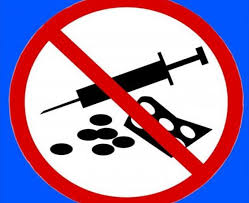
Fight against drugs
The term drugs refers to all those painkillers that can cause drowsiness or anesthesia. Currently, so-called opioids are classified as such, that is, substances produced by opium alkaloids (opiates) and synthetic substances with similar activity.
The activity of these drugs is mediated through interaction with certain receptors present in the central nervous system, called opioid receptors, due to the observed action of these substances. In fact, these receptors are activated by endogenous neurotransmitters such as endorphins, encephalins and dynorphins, which is why they are called opioid peptides, however, after the discovery of opiates, the receptors remained with the original name, derived from the connection with opium derivatives, i.e. opioid receptors.
All opioids have the same activity, in particular, their main action is to control pain, that is, pain relief. In addition to this main property, this class of substances also causes respiratory depression, vasodilation and a decrease in cardiac activity, suppression of the immune system and increased secretion of prolactin, a decrease in intestinal motility and a hormonal antidiuretic.

The use of these substances also has a behavioral effect, in fact, causes euphoria and well-being.
Another effect of opioids is antitussive action, in fact, some derivatives of codeine are still used in the treatment of cough.
As already mentioned, the main function of these substances in the pharmacological field is to suppress the main pain in the treatment of pain in terminal and neoplastic diseases, postoperative pain, severe headaches, heart attack, colic and in some cases as anesthetics for special surgical conditions.
Some derivatives of this family of substances are used to treat dysentery due to their inhibitory effect on intestinal motility.
The reasons that can push an athlete to use drugs are:
- reduce the perception of pain in accidents
- reduce anxiety conditions that can compromise performance
- to reduce the pain caused by punches by the opponent in the case of athletes who practice ring sports
In sports, drug use is aimed at suppressing the perception of pain when an athlete suffers from Algeria, inflammation or injury and wants to compete in these conditions or in the practice of pain-related disciplines such as boxing and martial arts. the whole. These substances are indeed capable of raising the pain threshold to the point where you cannot even notice any physical harm or perceive it as a harmless hazardous situation. Drugs reduce anxiety and fear, so the athlete under the influence of these substances faces the competition with greater serenity and courage. In practice, the analgesic and euphoric effect allows the athlete not to feel pain and to face a dangerous situation with greater safety and determination, therefore participation in competitions under the influence of these substances guarantees a greater output in combat sports or in the case of especially emotionally athletes or in conditions in which the athlete represents disease states that compromise athletic performance, for these reasons the Olympic Committee has included drugs on the list of prohibited substances.
However, it should be added that among the effects that, after drug use, conditions of low psychophysical reactivity and poor mental clarity and drowsiness can occur, conditions are certainly useless for an athlete, therefore the real usefulness of these substances in the sports field is clear, as well as because there is no research on the matter. Therefore, an athlete who attempts to use drugs to reduce pain sensation should carefully check that this treatment does not reduce his psychomotor skills.
To overcome this problem, drugs are taken together with stimulants such as cocaine and amphetamines, in which case the substances taken together have a synergistic effect on pain perception, since both increase pain resistance, in addition, the stimulant cancels the sedative effect drugs.
Cases of positive drug attitudes are very rare and account for less than 1% of the total number of positive tests. Obviously, the use of these substances is of little use for athletes, but there is a real risk of abuse although, despite anti-doping rules, athletes still use them before competition.
In accordance with the current regulations, drugs are prohibited only before the competition, therefore the athlete in the subsequent stages of the race can use these substances to treat pain caused by injury or blows of the opponent, in the case of ring sports.
Certain opium derivatives, heroin in particular, have notoriously become substances of abuse, especially in the seventies and eighties, there were many deaths after heroin overdose, even today there are many cases of opioid dependence that require hospital treatment and recovery from – for constancy in society. Heroin addiction makes people slaves to this substance.

Side Effects
The side effects of drug use are numerous and very serious. Tolerance and dependence are conditions that arise quickly for several reasons: the user of these substances soon develops an enzymatic kit capable of metabolizing the substances in question more quickly, moreover, overstimulated receptors tend to lose their sensitivity soon, and, finally, strong behavioral effects have an enhancing effect. a character that makes the user constantly seek these sensations. Constant, persistent use causes an addiction state characterized by withdrawal symptoms when the body is deprived of opioids. In conditions of withdrawal, a person experiences physical pain, anxiety, agitation, cold sweating, depression, cramps, insomnia, diarrhea and vomiting.
The resulting respiratory depression can damage the lungs and this can even lead to death.
There may also be an increase in intracranial pressure, which can also lead to coma and death.

There are also many other side effects that, although considered minor, pose an additional risk to opioid users, in fact, constipation, excessive sleepiness, weakened immune system, hypercortisemia, mood disturbances, and decreased hormone production may occur. sexual, decreased production of endogenous opioid peptides, nausea, loss of cognitive functions such as memory and attention.
Italian law deals with most narcotic drugs, hence the use of a finger. Medicines have special restrictions to reduce the risk of abuse.
